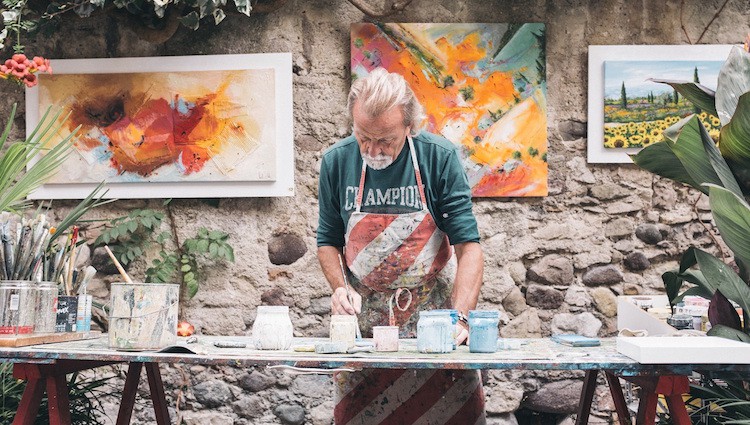“Being good in business is the most fascinating kind of art. Making money is art and working is art and good business is the best art.” Who said that? Was it Steve Jobs? Peter Drucker? No, it was Andy Warhol. The famous pop artist literally did make his art into a business. There are thousands of factory-produced Warhol prints still circulating.
Factory produced? According to The New York Review of Books, in 2012 Warhol’s foundation decided to sell off all of his painting and prints. It’s controversial, because starting around 1970 he outsourced production, giving producers a template from which to create. The paintings have a Warhol signature on them but they’re not necessarily produced by him.
It was a risk, but it generated around 100,000 works, millions of dollars in sales, as well as proceeds to the Andy Warhol museum and artist grants. It also made Warhol a fortune while he was still alive.
Artists like Warhol create their own market and they figure out ways to innovate. They take risks. When Steve Jobs introduced the iPod a huge part of the appeal was its aesthetic. Sleek, elegant, simple, mass-produced—the iPod was the Warhol of tech products.
What Can Entrepreneurs Learn From Artists?
Value billing
How many times have you been to an art exhibit and wondered how, exactly, the artist priced a piece? The answer is value billing. The artists simply decides what the piece should be worth—the artist creates its value. The higher an artist charges, the more people think the piece is worth.
In the business world, there is a market to which we answer in terms of pricing. But if you’re Steve Jobs and you’re confident in your work, you charge more than the other mp3 players on the market.
Writing for TSheets Time Tracking, CPA Megan Bronson describes value billing in terms of additional services you’ll be providing. Notice she describes value billing as an art. She presents a template for how to do this—it’s client-based:
– Determine how much you’ll be charging the client within the given period of time for the basic service or product
– Think of all the meetings and additional services that will add value to the relationship
– Propose these additional values as part of your plan
– Calculate how much you want to charge for additional values, add it to the baseline, and divide everything into a monthly fee
– Ask the client to commit to a six month contract
Value billing is a risk. Great artists take the risk and continue to do great work until the consumer recognizes quality and acts accordingly.
Collaboration
It’s easy to think of the artist as a lone figure, working against the norm to produce original art. Granted, great ideas and great work often come from a single individual. But the art world consists of tiny communities, or schools of people who are like-minded and constantly learning from each other. Picasso had Braque, his colleague and fellow inventor of the Cubist movement. Warhol had Malanga, who worked with him closely on virtually all of Warhol’s output during the sixties. There are countless other examples of collaboration in art.
Writing for Appnovation, a Senior Front End Developer named Rob (they don’t even give us his last name they’re so communal!) makes the following actionable points about collaboration:
– Habit: Collaboration is not a single act, but a continuing practice—a process
– Knowledge: Other people have a bank of different perspectives that are valuable and can help you adapt
– Development: During the developmental stage, accept criticism, learn from others, collaborate; during the competitive stage, evaluate the competition and collaborate with others on how best to win
– Productivity: Don’t dwell on mistakes with your collaborator, make them and learn from them; Warhol said, “When you do something exactly wrong, you always turn up something”
– Action: Don’t just talk, do—don’t talk about collaborating, do it
– Calm: If your collaborator distracts you, stay calm and recognize the distraction can help you achieve your goal
Just like value billing, collaboration is a risk because you’re trusting someone else. But when you do, the results are incredible.
Economy of means
Especially at the outset, artists must work with the materials they can afford. Limited means can lead to creative solutions. When you only have so much money on hand, you’re forced to innovate with what you have. Many poets find imposing a restrictive form doesn’t cramp creativity—it facilitates it.
Take advantage of the tools you already have and push yourself to the limit. The lesser your means, the more you’ll be forced to innovate in order to achieve your ends.
Entrepreneurs learn from everything
Just like the best artists, the best entrepreneurs observe their world and learn from it. Everything is fodder for innovation. Filter the world through your lens, through your unique perspective, put your perspective to work, and you’ll do good business—the best art.
Photo credit: Unsplash.com





